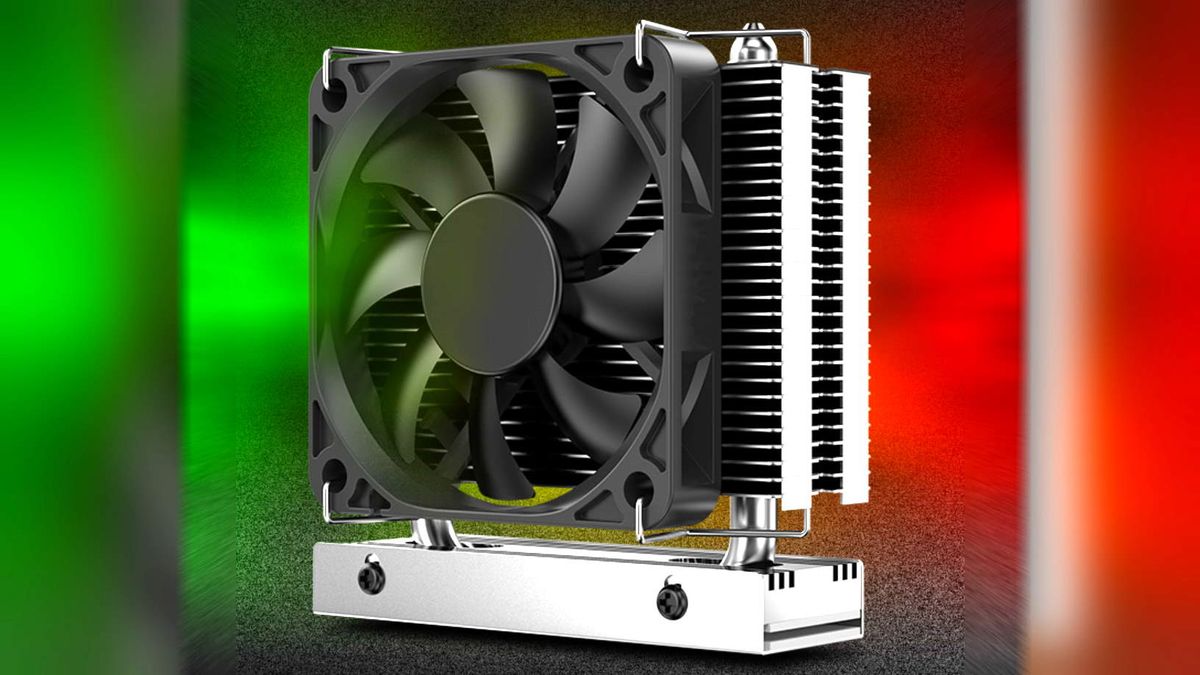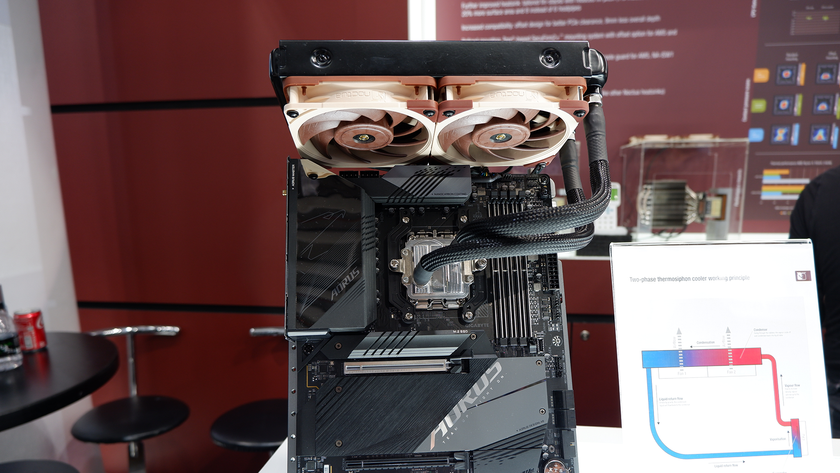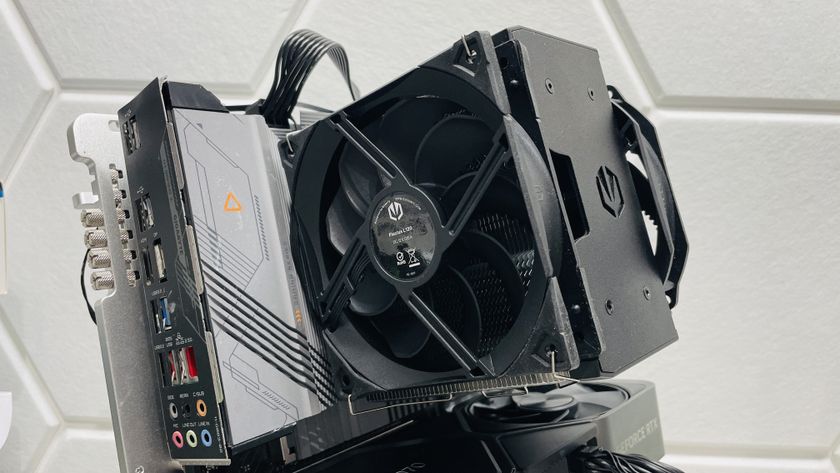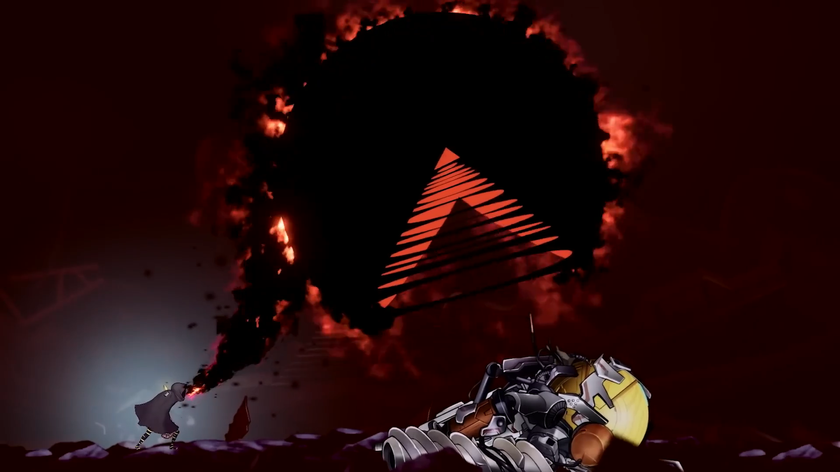I too laughed at this ridiculous SSD tower cooler and now I fear it might augur a super-heated future
SSD makers keep telling us PCI 5.0 drives are going to be hotter, but hot enough to need this?

From the looks of this new SSD tower cooler, I'm a little scared about just how toasty the new PCIe 5.0 SSDs are going to get once AMD's Zen 4 and Intel's Raptor Lake platforms launch. If they need this sort of cooling we're going to have to think about where we stick our graphics cards and solid state drives in relation to each other.
This third-gen JiuShark SSD cooler might look like some April fool's jape, but holy hell, if this thing chills your drive as well as it promises—and next-gen drives really need serious cooling—then you might well be grateful to have another hunk of metal strapped to your motherboard.
Our sister site, Tom's Hardware, dug up the SSD chip chiller via SI-129 on Twitter, and at just $13 (by direct currency conversion) it looks like a bargain. The reported cooling performance means you can get a 31% and 38% reduction in temperature (on memory and controller chips respectively) from just having the heatsink itself installed. Strap a 60mm fan to it and you're talking about an even more drastic reduction in temps.
The Flash memory chips will then run 54% cooler and the memory controller's temperature drops by 57%. These are pretty spectacular numbers, and based on the Samsung 980 Pro, which is a modern PCIe 4.0 SSD.
Though obviously it's important to state that these are manufacturer-provided benchmarks and we can't guarantee that this is the sort of thermal performance you might be able to expect in the real world until we get our hands on one.
Look, I went into this laughing at the ridiculous idea of strapping a tower cooler to an SSD—haha, talk about overkill, thinks I—but those temperature deltas are making me reconsider my initial derision.




Best SSD for gaming: the best solid state drives around
Best PCIe 4.0 SSD for gaming: the next gen has landed
The best NVMe SSD: this slivers of SSD goodness
Best external hard drives: expand your horizons
Best external SSDs: plug in upgrades for gaming laptops and consoles
Granted, the Samsung 980 Pro is not impossibly hot under load, but it can throttle if pushed too far. Standard heatsinks will do enough to keep that drive chill enough that performance is never affected, but if PCIe 5.0 SSDs really do push the thermal envelope a lot harder, then we might well be up for this sort of extreme cooling.
The biggest gaming news, reviews and hardware deals
Keep up to date with the most important stories and the best deals, as picked by the PC Gamer team.
I mean, if they really are doubling the transfer performance of current-gen SSDs, then maybe they're going to need their peak temps dropped by half, too. At the moment the messaging is a little mixed; we've had Phison telling MSI that it expects "to see heatsinks for Gen5... but eventually we'll need to have a fan that's pushing air right over the heatsink, too."
Though that same representative, Sebastien Jean, told us he wasn't then speaking about Phison's upcoming controller. "Phison is also working closely with our motherboard partners to improve integrated onboard passive cooling," he says. "This eliminates the need to add costly third-party solutions while still retaining high levels of performance and reliability."
Whatever the full story, we're expecting some extra heat in the next generation. And, considering where a motherboard's primary M.2 SSD slot is, there's the potential for some conflict when there's a hot and heavy graphics card installed right next to a next-gen drive. The benchmarks above don't take this GPU thermal uncertainty into account, and certainly having a pair of super-hot components right next to each other isn't a good look.
I can definitely see mobo makers rethinking where they jam their SSD slots going forward if this sort of cooling becomes worthwhile enough to be widely used.

Dave has been gaming since the days of Zaxxon and Lady Bug on the Colecovision, and code books for the Commodore Vic 20 (Death Race 2000!). He built his first gaming PC at the tender age of 16, and finally finished bug-fixing the Cyrix-based system around a year later. When he dropped it out of the window. He first started writing for Official PlayStation Magazine and Xbox World many decades ago, then moved onto PC Format full-time, then PC Gamer, TechRadar, and T3 among others. Now he's back, writing about the nightmarish graphics card market, CPUs with more cores than sense, gaming laptops hotter than the sun, and SSDs more capacious than a Cybertruck.











